Jewelry made with other Stones, Shells, and Minerals:
Other stones and minerals are important to the American Indian jewelry trade. Not everyone is into Turquoise, therefore, I offer an array of beautifully crafted stones, minerals, and shells from around the world. All pieces are cut and set by hand into jewelry by the best American Indian silversmiths.
The
icons below represent some different stone and shell options I
carry. Just click the icons below to see jewelry made with that particular material and learn about each materials' role in the American Indian jewelry trade.
Because
each piece is hand made, and one of a kind, our inventory is constantly
changing. If you are interested in a particular stone, or piece of
jewelry, please call or email me to find out what's currently in stock.
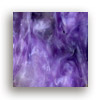
Charoite
Charoite
Charoite is found only in the Murin Mountains in Yakutia, Russia. The name comes from the Russian word "chary" (which means magic) and the river Chara, which runs through Yakutia. Charoite is a wonderful purple color with a feather like pattern throughout the stone.
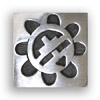
Hopi
Hopi
Modern Hopi Jewelry was developed during, and after WWII. It was in the 1940’s that Hopi silversmiths began the unique “over-lay” style of jewelry fabrication. Overlay pieces are constructed by using two flat pieces of silver. The top layer has designs cut out, by hand, with a jeweler’s saw. This layer is then silver soldered to the bottom smooth piece. Texturing is added inside the design and finished with a blackening process. Hopi jewelry will come with either a satin-like finish, or more commonly a matte-like polish. Always look under the piece for the silversmith’s “hallmark”. All Hopi artists use a “hallmark” as his, or her signature.
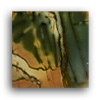
Red Creek Jasper
Red Creek Jasper
Red Creek Jasper is a member of the Crystalline Quartz family. Jasper refers to an opaque stone derived from the Greek word meaning, "spotted stone". Red Creek is from a recently discovered vein in Asia. It has beautiful color washes of red, green, yellow, taupe, and sometimes blue and/or purple. It's picture like patterns are formed from intersecting lines that are brown or black.
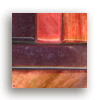
Cobblestone
Cobblestone
Navajo craftsmen create this creative and colorful look by using various stones, shells, and turquoise. Pieces are snugly inlaid, without silver channels, and never ground level or smooth. This creates the "cobblestone" look which always garners attention.
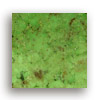
Gaspeite
Gaspeite
A rare mineral, first discovered on the Gaspe Peninsula in Quebec, Canada, the stone is also found near nickel deposits in western Australia.
The color of green apple, the stone is softer than turquoise and should be treated with care.
Australia's Aborigine people believe the stone brings good fortune to those who possess it. A delightful stone to be worn with pride.
The color of green apple, the stone is softer than turquoise and should be treated with care.
Australia's Aborigine people believe the stone brings good fortune to those who possess it. A delightful stone to be worn with pride.
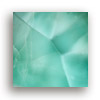
Larimar
Larimar
Larimar is extremely rare, found only within one square mile of a volcanic mountain range in the Dominican Republic.
The blue color comes from the composition of vanadium, copper, and magnesium. It is not known how much of this rare gemstone remains, but it's certain that the mines will play out and only existing pieces will be available for you to enjoy.
The blue color comes from the composition of vanadium, copper, and magnesium. It is not known how much of this rare gemstone remains, but it's certain that the mines will play out and only existing pieces will be available for you to enjoy.

Onyx
Onyx
Onyx is a banded variety of chalcedony, a cryptocrystalline form of quartz.
The colors of its bands range from white to almost every color (not
including shades such as purple, blue, or black).
Black Onyx enhances steadfastness and determination, setting ones mind to a task. It is grounding stone, valuable in difficult or confusing times in our lives. Extremely helpful to people who are in the process of " letting go" or releasing the past attachments to "people , places or things.
The colors of its bands range from white to almost every color (not
including shades such as purple, blue, or black).
Black Onyx enhances steadfastness and determination, setting ones mind to a task. It is grounding stone, valuable in difficult or confusing times in our lives. Extremely helpful to people who are in the process of " letting go" or releasing the past attachments to "people , places or things.
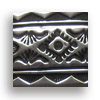
Navajo Silver
Navajo Silver
The Navajo learned silver working techniques in the 1850's. The early pieces consisted of earrings, bow guards, belt fasteners, and bracelets. A typical Navajo style emerged using heavy silver work sometimes worked around turquoise stones. The Navajo focus on hammering, bending, and molding silver. Many pieces are inscribed with dye stamps to form designs, and others are made with applique, (leaves, feathers, and flowers cut from silver and soldered on to an underlying piece). No other tribe incorporates the use of silver as stunningly as the Navajo.
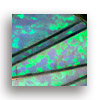
Opal
Opal
Synthetic Opal is produced in laboratories, and has similar features as narural opal. Synthetic opal (polymer impregnated) has brighter colors, and larger color patches than natural opal. Also lab opal has a distinct pattern and shows a more ordered array of color. Lab opal does not fade, peel, chip, crack, or change color over time.
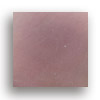
Pink Mussel Shell
Pink Mussel Shell
Pink Mussel is a fresh water clam found in Oklahoma, Texas, and Arkansas. First used by the Cherokee Indians to adorn themselves during the "trail of tears" march from North Carolina and Tennessee to the Indian territory (Oklahoma) in the mid 19th century. The pink shell became a favorite among American Indians and non-Indians alike.
Today, the shell is carefully harvested, dried, and cut to be used in American Indian jewelry. The pink shells are primarily used by Navajo craftsmen but the Zuni Pueblo produce jewelry with this shell as well.
Today, the shell is carefully harvested, dried, and cut to be used in American Indian jewelry. The pink shells are primarily used by Navajo craftsmen but the Zuni Pueblo produce jewelry with this shell as well.
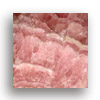
Rhodochrosite
Rhodochrosite
Rhodochrosite is a manganese carbonate material in it's (rare) pure form, as a rose red color. Rhodochrosite occurs as a hydrothermal vein material and also as stalactite examples that are unique and very attractive . Quality banded ("ribbon") specimens are usually used for decorative stones and jewelry.
Rhodochrosite gets it's name from the Greeks, and means "rose colored". Colorado officially named it as it's state mineral in 2002. Some of the finest specimens came from the Sweet Home mine, Alma, Colorado, and also near Silverton Colorado.
Rhodochrosite gets it's name from the Greeks, and means "rose colored". Colorado officially named it as it's state mineral in 2002. Some of the finest specimens came from the Sweet Home mine, Alma, Colorado, and also near Silverton Colorado.
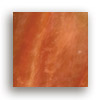
Spiny Oyster (orange)
Spiny Oyster (orange)
Spiny Oyster is found in the Sea of Cortez off Baja, California. The shell comes in three main colors: Orange, red, and purple. The oyster's latin name is Spondylus Princeps - meaning "spines on it's back", The shell also acquired the name "princess" when explorer Cortez presented his marine discoveries to the king of Spain, and the king's daughter fell in love with the unusual and lovely spiny oyster shell.
Spiny Oyster shell was a favorite among the Mayan people and has been found numerous times in archeological digs throughout the southwest United States.
Spiny Oyster shell was a favorite among the Mayan people and has been found numerous times in archeological digs throughout the southwest United States.
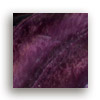
Spiny Oyster (purple)
Spiny Oyster (purple)
Spiny Oyster is found in the Sea of Cortez off Baja, California. The shell comes in three main colors: Orange, red, and purple. The oyster's latin name is Spondylus Princeps - meaning "spines on it's back", The shell also acquired the name "princess" when explorer Cortez presented his marine discoveries to the king of Spain, and the king's daughter fell in love with the unusual and lovely spiny oyster shell.
Spiny Oyster shell was a favorite among the Mayan people and has been found numerous times in archeological digs throughout the southwest United States.
Spiny Oyster shell was a favorite among the Mayan people and has been found numerous times in archeological digs throughout the southwest United States.
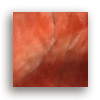
Spiny Oyster (red)
Spiny Oyster (red)
Spiny Oyster is found in the Sea of Cortez off Baja, California. The shell comes in three main colors: Orange, red, and purple. The oyster's latin name is Spondylus Princeps - meaning "spines on it's back", The shell also acquired the name "princess" when explorer Cortez presented his marine discoveries to the king of Spain, and the king's daughter fell in love with the unusual and lovely spiny oyster shell.
Spiny Oyster shell was a favorite among the Mayan people and has been found numerous times in archeological digs throughout the southwest United States.
Spiny Oyster shell was a favorite among the Mayan people and has been found numerous times in archeological digs throughout the southwest United States.
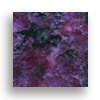
Sugilite
Sugilite
Sugilite is a rare purple mineral discovered in 1944 by Japanese petrologist Ken Ichi Sugi on Iwagi Islet, Japan. The largest known deposit is the Wessels Mine in Cape Province, South Africa.
The Mineral is usually found in a strata bound manganese deposit. Sugilite is a hard mineral with a MOHS hardness of 5.5 to 6.5. Most of the Wessels Mine has been used up, finding jewelry grade Sugilite on the open market is rare indeed.
The Mineral is usually found in a strata bound manganese deposit. Sugilite is a hard mineral with a MOHS hardness of 5.5 to 6.5. Most of the Wessels Mine has been used up, finding jewelry grade Sugilite on the open market is rare indeed.
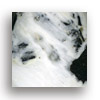
White Buffalo
White Buffalo
This mineral, sometimes called "white turquoise" is actually not a turquoise at all. White buffalo is composed of calcite & quartz and is much harder.
The mineral is found in small quantities primarily near Tonapa, Nevada and has become a favorite with Navajo craftsmen. High quality white buffalo with fine visible matrix, is actually harder to find in most Indian jewelry markets than turquoise.
Color ranges from powder white to greyish white with small amounts of matrix "peppered" throughout the stone.
The mineral is found in small quantities primarily near Tonapa, Nevada and has become a favorite with Navajo craftsmen. High quality white buffalo with fine visible matrix, is actually harder to find in most Indian jewelry markets than turquoise.
Color ranges from powder white to greyish white with small amounts of matrix "peppered" throughout the stone.
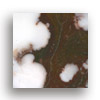
Wild Horse
Wild Horse
Wild Horse, sometimes called "red thunder", is a hard white magnesite with veins of reddish brown hematite.
Both wild horse and white buffalo are harder than turquoise, and take on a brilliant shine when polished.
Wild horse comes primarily from the Halo Wilderness in the southwest United States, and has become a favorite alternative to many traditional stones. Most wild horse pieces are crafted by Navajo silversmiths.
Both wild horse and white buffalo are harder than turquoise, and take on a brilliant shine when polished.
Wild horse comes primarily from the Halo Wilderness in the southwest United States, and has become a favorite alternative to many traditional stones. Most wild horse pieces are crafted by Navajo silversmiths.
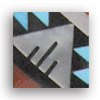
Traditional Zuni
Traditional Zuni
Zuni craftsmen were working with copper long before being introduced to silver by the Navajo. Zuni silversmiths soon incorporated prehistoric mosaic inlay techniques using silver channels to separate turquoise and other colorful stones from each other. The results are distinct and visually pleasing. The Zuni Sun is a popular design. Because the Zuni Pueblo is a small community, the amount jewelry for sale can be limited.
